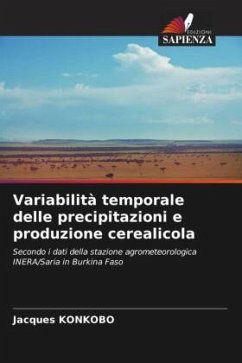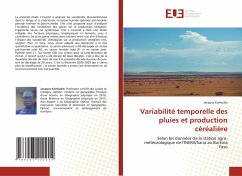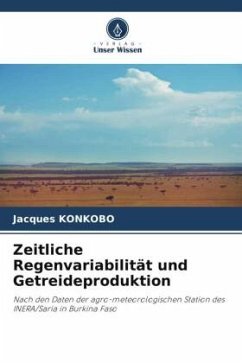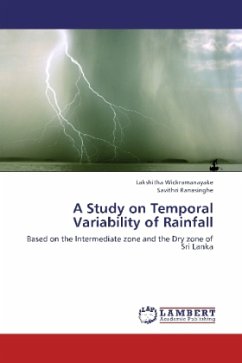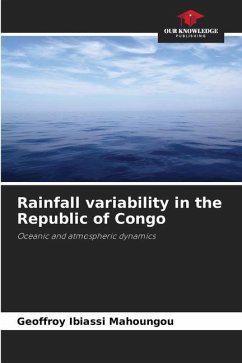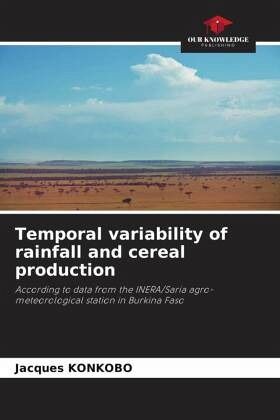
Temporal variability of rainfall and cereal production
According to data from the INERA/Saria agro-meteorological station in Burkina Faso
Versandkostenfrei!
Versandfertig in 6-10 Tagen
36,99 €
inkl. MwSt.

PAYBACK Punkte
18 °P sammeln!
This study focuses on analyzing rainfall variability over time and characterizing the wet season (pre-wet period, wet and post-wet period). It also proposed to analyze the impact of rainfall variability on cereal production. The approach followed is systemic. It consisted of carrying out an integrated study of physical, biophysical and human factors, then characterizing the main interactions between them in order to assess the impact of climatic variability on cereal production (millet, sorghum). To do this, we have adopted an approach that is both quantitative and qualitative. The rainy seaso...
This study focuses on analyzing rainfall variability over time and characterizing the wet season (pre-wet period, wet and post-wet period). It also proposed to analyze the impact of rainfall variability on cereal production. The approach followed is systemic. It consisted of carrying out an integrated study of physical, biophysical and human factors, then characterizing the main interactions between them in order to assess the impact of climatic variability on cereal production (millet, sorghum). To do this, we have adopted an approach that is both quantitative and qualitative. The rainy season was divided into pre-wet season noted A2, wet season noted B1 and post-wet season noted C1. Over thirty (30) years chosen for the characterization of the climate, it appears that A2 has been shifted by two decades, that is to say from the second decade of the month of May to the first decade of the month of June, i.e. a lag of 20 days. It was the decade 2000-2009 that saw the most change; the wet season experienced a very marked decrease or shortening.




